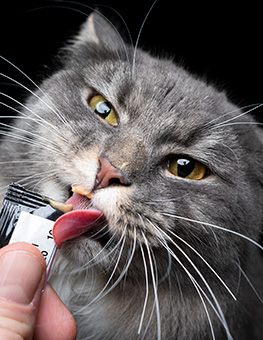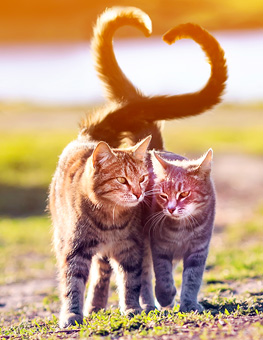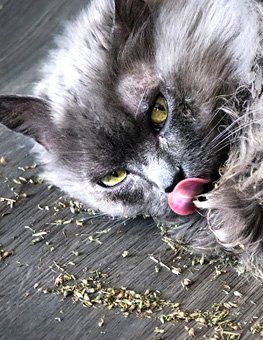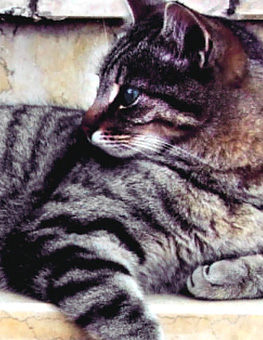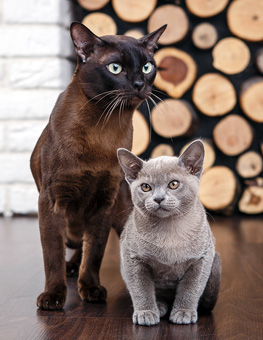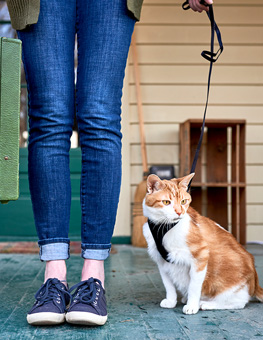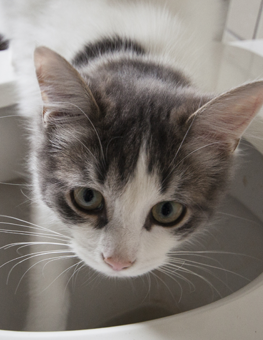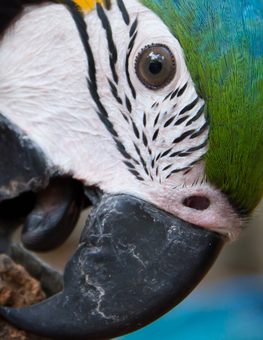Immediate Warmth will be your First Order of Business
You’ve discovered a kitten (or a litter of kittens) that feels cool to the touch. You can’t find the mom. What should you do first?
Kittens need warmth more than anything else—even more than food. Your first priority is to get the kitten out of harm’s way and warm that baby up. Never feed a cold or lethargic kitten. Wait until he’s warm and wiggling before you give him a bottle.
The younger the kitten, the more urgent his need for external heat. Because kittens can’t shiver for their first seven to ten days, they can’t generate heat and control their body temperature like older cats can. He’s totally dependent on his mom to keep him warm. With her now out of the picture, this responsibility now rests with you! When Mom leaves to hunt for food, the siblings sleep in a toasty little kitten pile to stay warm. Without his family, he’s in trouble. Putting it bluntly, the cold will kill him.
Since orphans show up when you least expect them, it’s doubtful you’ll have an animal-safe heating pad handy. The best way to warm a chilled kitten is to place him next to your bare skin. (If his sharp little claws scratch your skin, wrap him in a single layer of a t-shirt.) Not only is your body heat readily available, your 98.6° has the added advantage of warming him slowly and safely. Once he warms up and starts squirming, wrap him up in a towel, t-shirt or a piece of cloth.
At home, create a toasty nursery for your baby.
- Place a cardboard box on top of a heating pad. Make sure the box sits half on-half off of the pad so the kitten can crawl off should it grow too hot. Cover the floor with a towel or blanket. Put the box atop the pad rather than setting the pad inside so the kitten can’t accidentally become trapped under it. If you put the pad in the box interior, make sure kitty can’t come in direct contact with it. Keep the nest out of the way of air vents and drafts.
- You can buy heating pads made specifically for animal use. However, these may not be readily available at the moment you need them. Especially if you use a human pad, monitor the kitten and the pad temperature closely, as the temperature can soar to a deadly level very quickly. The manufacturers of these pads do not recommend using them with animals. New models of these human pads come with automatic shut-offs, that kick off after two hours. In that amount of time a kitten can cook like a sausage if he can’t move off the pad. If the kitten is open-mouth panting, the box is too warm.
- If you can’t put your hands on a heating pad, try filling a heavy sock with ½ cup uncooked rice. Heat in the microwave for 60 seconds. The rice-filled sock should stay warm for three hours. Check it to make sure it’s not too hot. You may need to wrap it in cloth.
- You can also provide a hot water bottle or improvise one out of a shampoo or mouthwash bottle. Wrap a thick towel around the bottle. Again, make sure the kitten can crawl away from the heat source should he get too hot.
- Heat lamps will warm him up, but they can be hard to regulate. You don’t want to accidentally cook him.
- Your kitten’s body temperature ranges from 101° F to 102° F.
| Kittens's Age | Room Temperature |
| Newborn to 7 days | Around 90° F |
| 8 to 30 days | From 80° F to 85° F |
| 4 weeks | 75° F |
| 6 weeks | 70° F |




